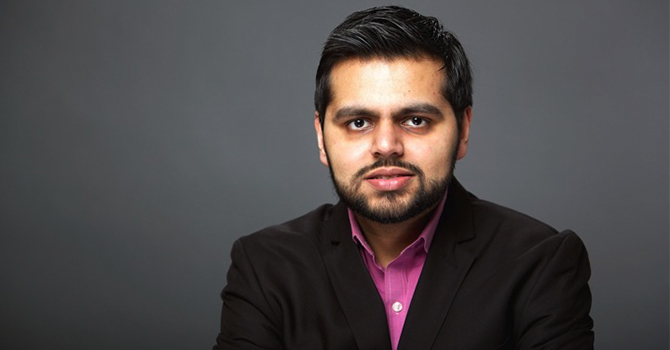Deciphering the Data Behind Emojis

Hamdan Azhar
MS ’10, Biostatistics; Data Journalist, New York City
Hamdan Azhar is fluent in three languages - English, Urdu, Arabic - proficient in a fourth (Spanish), and learning a fifth (German). When not speaking these dialects, he translates numbers for people as a data journalist.
"What I like about statistics is that you can apply it to any discipline," says Azhar. "I can play around with data from any field and understand what's going on."
Hamdan has certainly proven the versatility of statistics in his own career. Since graduating from the University of Michigan in 2010, Hamdan has been involved in a variety of fields, including advertising, tech startups, politics, and data journalism. In each of these areas, he's used his statistical and computational skills to analyze data.
"Working with data requires intuition, and you get a feel for it as you go along," he says. He tells students interested in data journalism to get exposure to as many different fields as possible. "Working in different fields allows you to develop that intuition and become a more versatile data scientist, to have more options."
One of Hamdan's most rewarding experiences was his work with Ron Paul during the 2012 presidential campaign. He went to Iowa as a phone bank volunteer, realized how much unused data the campaign generated, and told its manager, "I can tell you how to win more votes – using data." At the end of three days, he was Ron Paul's resident statistician and traveled the country for six months honing the campaign's efforts. The immediate impact Hamdan's data analysis had on the entire operation was exhilarating. "I made a difference in that phone bank," he says. "It was amazing, I had never had so much fun."
After his stint in politics, Hamdan took a position with Facebook's advertising team for two and half years. In this job, he learned the ins and outs of how decisions are made using data at the corporate level. "It's not something you can teach in any classroom," he says. "It's something you learn by observing." Hamdan relates that his work in politics and advertising were "very similar from a data perspective." Whether he was trying to predict voting outcomes or purchases, the data helped him understand people and how they made decisions.
Now Hamdan uses his analytical abilities and consequent insight into people's behavior in his work as a data journalist. "I can use my data skills to ask meaningful questions about society and the world," he says. Hamdan considers a blog on emoijis to be his most innovative data journalism so far. He not only appreciates this niche field because it examines "popular sentiment around current events," but also because it engages people who would not normally be interested in data science. "When I talk to high school and college students about how data science can tell them which emojis Kanye West is using, and how that's different from the emojis Taylor Swift is using, their eyes just light up."
Hamdan hopes to make more people aware of data science's extensive ability to influence the world. "I have skills that can allow me to answer questions that millions of people care about," he explains. "We can use these skills to do something completely novel and innovative that no one has done before. That's what makes this so exciting to me."
